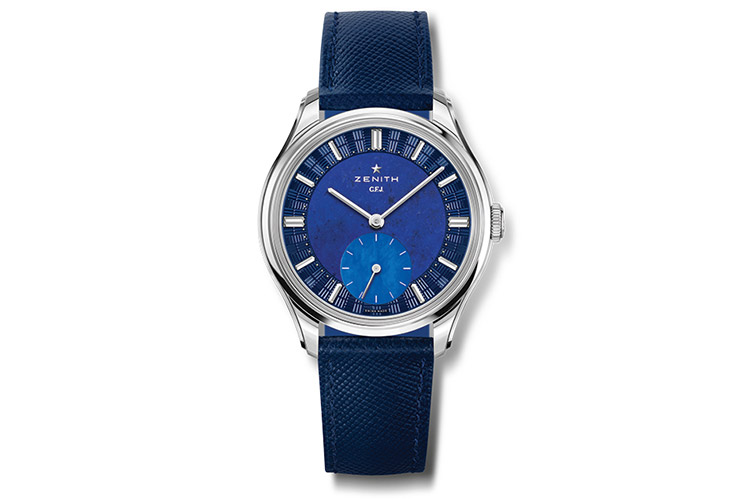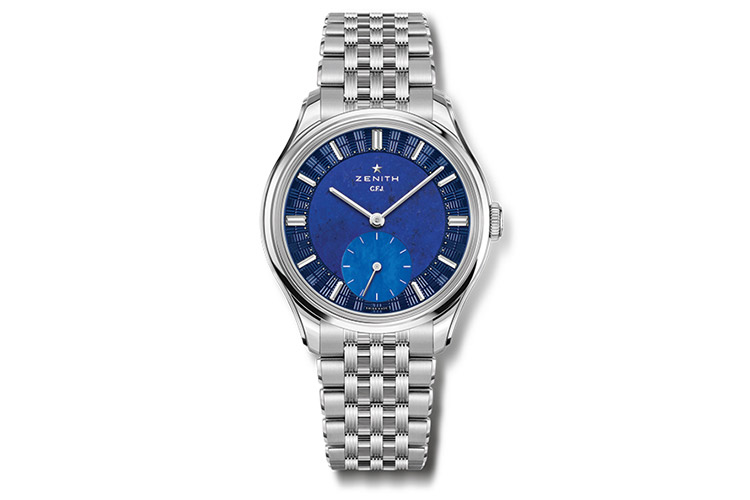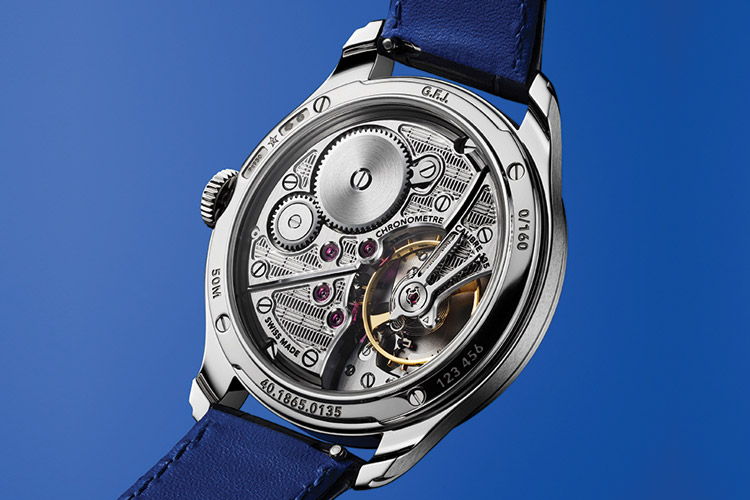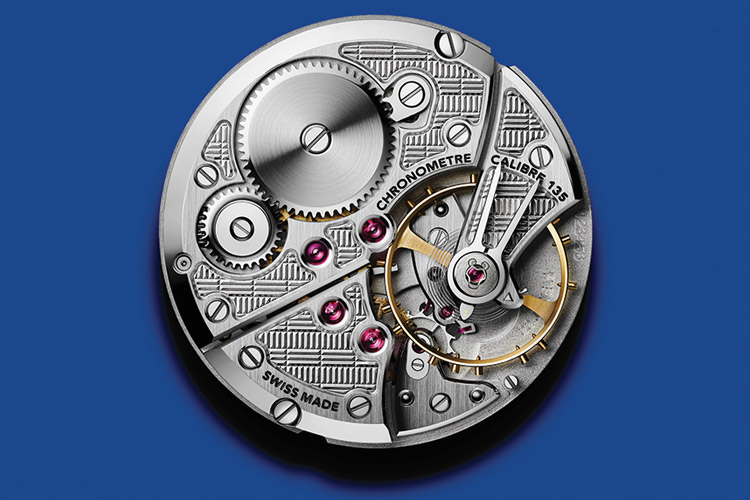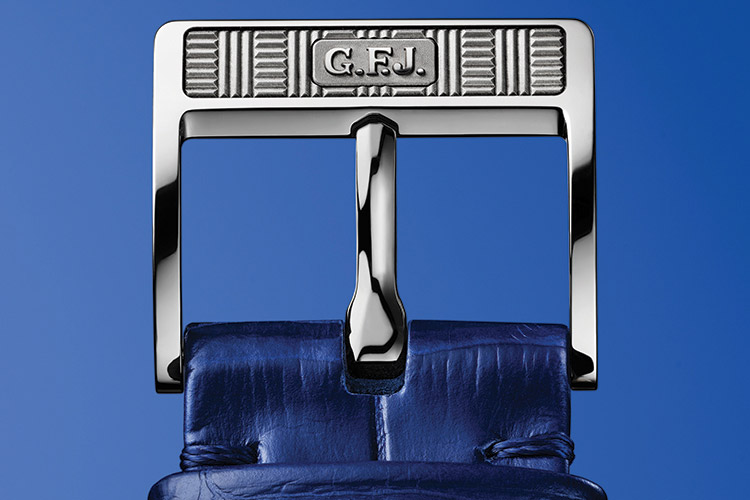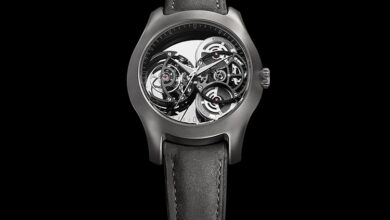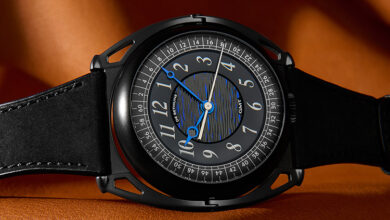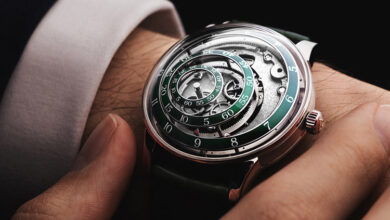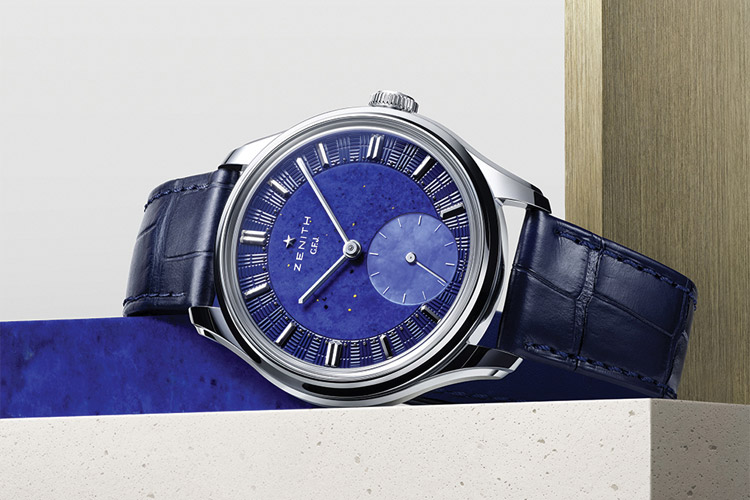
Zenith, which is celebrating its 160th anniversary this year, has unveiled a new timeless classic powered by an exceptional movement, which takes its name G.F.J. from the initials of the maison’s founder. The sleek, slender, and elegant G.F.J. brings back to life the legendary calibre 135, the most awarded movement from the golden age of observatory chronometer competitions
Decades ago, observatory trials were extremely important. Zenith took part in trials as early as 1897, and over the years, its movements have won a record 2,333 chronometry prizes. Among these, a movement outshone all others, the legendary calibre 135. Designed by Ephrem Jobin at the request of Charles Ziegler, Technical Director of Zenith, this chronometer calibre was specifically developed to compete in chronometry competitions at the Observatories of Neuchâtel, Geneva, Kew Teddington, or Besançon. Its name is derived from its dimensions, 13 lines (or 30mm, the maximum size allowed in the wristwatch category competition at the Neuchatel Observatory trial) and 5mm in thickness. It was produced from 1949 to 1962 in two distinct versions: a commercial variant (135), and an “O” iteration (135-O) created exclusively for observatory chronometry trials. The calibre 135-O received 235 chronometry prizes, an absolute record in the history of watchmaking. Regulated by renowned Zenith “chronométriers” Charles Fleck and René Gygax, this movement set an extraordinary record with five consecutive first prizes in the wristwatch category at the Neuchâtel Observatory, from 1950 to 1954.
Today, Zenith is resurrecting the Calibre 135; this new version uses the dimensions, the look, and the architecture of its ancestor. It incorporates an offset centre wheel, creating space to accommodate the oversized balance wheel that improves both precision and stability. The barrel now delivers 72 hours of power reserve compared to 40 hours in the 1950s version. It drives a new gear train featuring an optimised tooth geometry for enhanced efficiency. Operating at 2.5 Hz, the balance wheel features regulation screws and a Breguet overcoil. A signature feature of the 135-O, the double arrow-shaped regulator allows for precise adjustment, while a stop-second mechanism has been added to set the time to the exact second. The balance staff is now protected by spring-mounted jewel settings. The movements are regulated to be precise within +/-2 seconds per day, and their precision is officially certified by the COSC. Each component is meticulously finished. The bridges are distinguished by their “brick” guilloché finishing. The barrel features circular a satin finish and the crown wheel is black-polished. The large jewels add another refined touch.
True to the era of the calibre 135, the new G.F.J. watch – a limited edition of 160 pieces – captures the essence of the 1950s. Its slender, elegant 39mm platinum round case features a stepped bezel and curved stepped lugs. Its thin profile and sculptural lines are graced by exceptional finishes with alternating brushed and polished surfaces. The notched crown is emblazoned with the G.F.J. initials. Beneath the sapphire glass box, the G.F.J. is adorned with a blue dial – Zenith’s signature colour, with its three-part construction creating a compelling sense of depth while meticulously crafted details add a refined touch. The outer ring features a “brick” guilloché pattern, faceted white gold hour markers, and a discreet minute track of 40 white gold beads applied by hand. The central part is crafted from deep blue lapis lazuli, evoking a starry sky. Their natural texture makes each dial unique. The oversized seconds subdial at 6 o’clock is in mother-of-pearl, with thin baton-style white gold hands indicating the time. The G.F.J. comes with three different straps: a dark blue alligator leather strap, a black calfskin leather strap, and a blue “Saffiano” calfskin leather strap.
